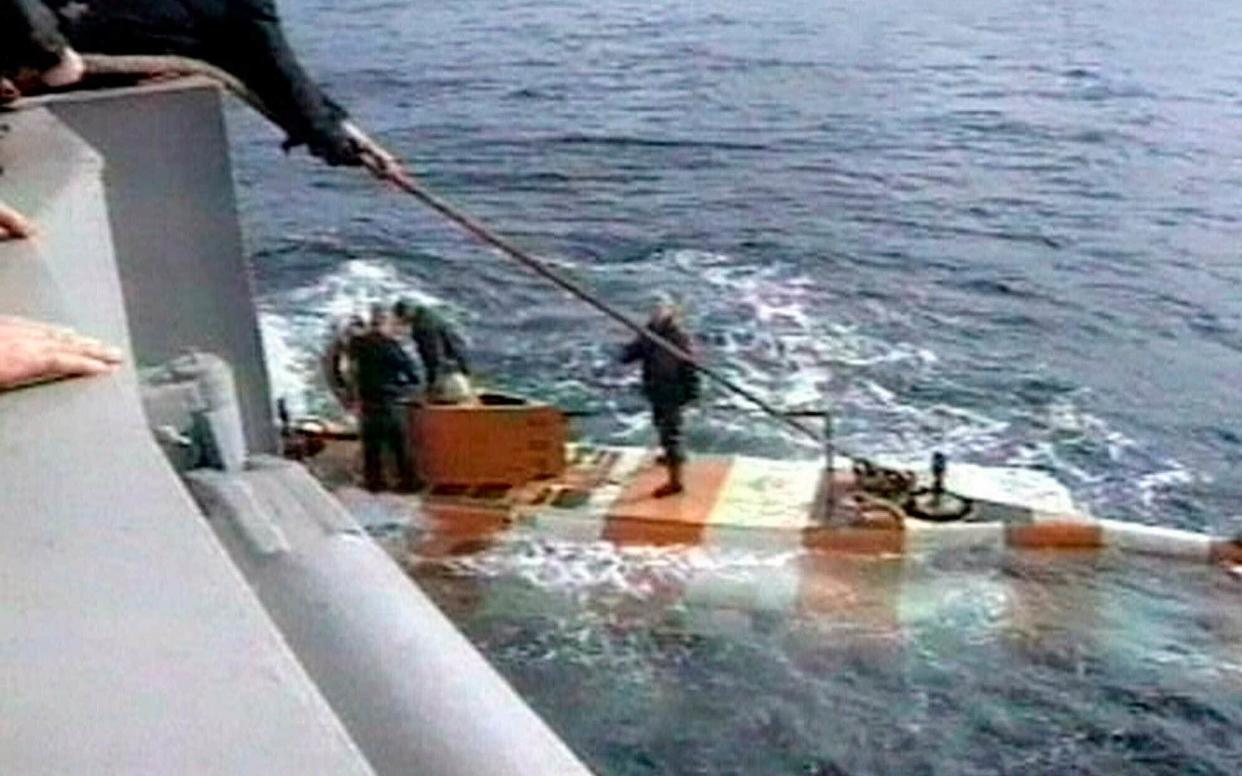Fourteen Russian sailors die in fire on 'nuclear-powered' submarine

Fourteen sailors were killed in a fire on a top-secret Russian submarine, the Russian Defense Ministry said on Tuesday, admitting to one of the country's worst naval disasters in a decade.
A Russian news outlet, RBC, cited an unnamed military source as saying the vessel was a nuclear-powered AS-12 deep-sea submarine known as Losharik, but there was no official confirmation.
The submarine, which is capable of serving under-water cables, was taking carrying out a survey of the sea floor in Russian territorial waters, according to the Defense Ministry. A fire broke out on the vessel, and the sailors died from smoke inhalation. The fire happened on Monday, but was not disclosed until Tuesday.
The submarine has returned to its port, the Northern Fleet Headquarters at Severmorsk, and unconfirmed Russian language reports say some five sailors from the vessel have been hospitalised.
Kremlin spokesperson Dmitry Peskov said on Tuesday that Vladimir Putin, the Russian president, has cancelled a planned public appearance to meet with his defense minister, Sergei Shoigu.
The investigation into what happened on the submarine is being managed personally by Russian navy chief Nikolai Yevmenov.
Monday's fire was compared to fate of the Russian nuclear-powered submarine Kursk.
In August 2000, the Russian nuclear-powered submarine sank to the floor of Barents Sea after two explosions in its bow, killing all 118 men aboard.
That accident, soon after Vladimir Putin, the Russian president, took office, focussed official attention on the state of the military and its hardware, which had been subject to underfunding and neglect after the collapse of the Soviet Union.
Since then, Mr Putin has overseen a massive increase in military funding.
Images of Losharik first surfaced in 2015, when the vessel happened to be caught in a photoshoot for Top Gear Russia. “Losharik is a deep-sea diving 'station' with a pressure hull composed of spherical compartments designed to withstand the pressure of deeper depths,” says Michael Kofman, an expert in the Russian Navy at the CNA think tank in Virginia.
The ability to dive beyond 1000 meters under the sea allows Losharik to set up infrastructure below water, examine salvage, or conduct special operations along the ocean floor.
Such special operations include mapping, cutting and tapping transoceanic communications cables.
The vessel is operated by a “highly secretive” special branch of the Russian Navy known as the Main Directorate for Deep Sea Research, or GUGI, Mr Kofman says.
Losharik is also reportedly designed to be carried great distances by a larger “mothership.” That ship is believed to be a vessel known as the Podmoskovye, a heavily modified Delta IV-class ballistic nuclear missile submarine built by the Soviet Union.

